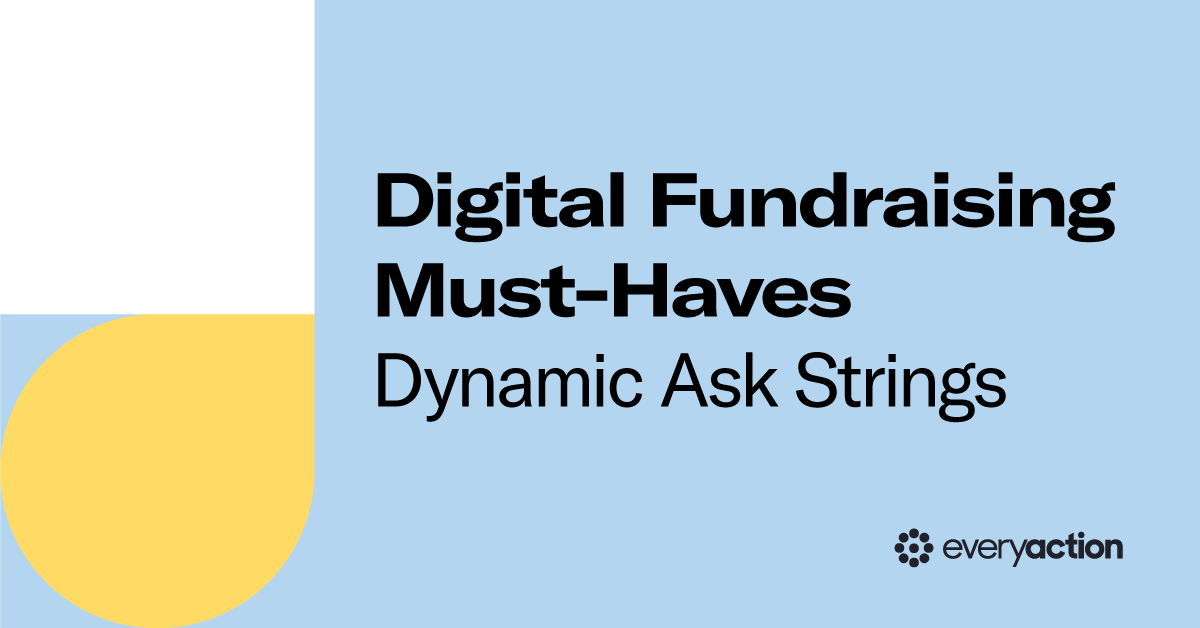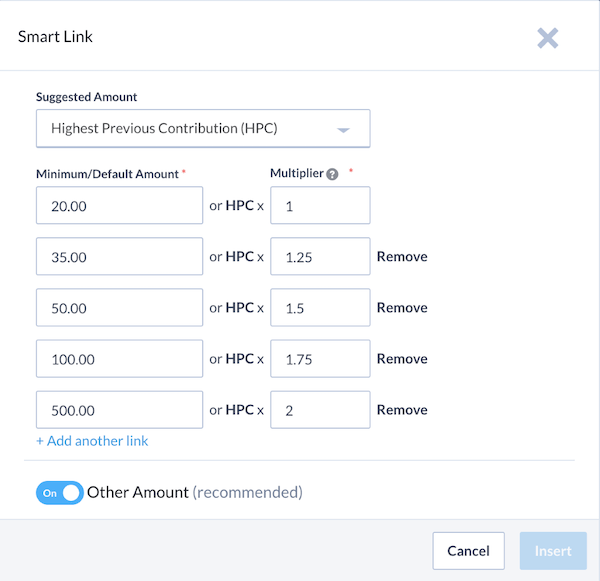Digital Must-Haves for Fall Fundraising Success Part 1: Dynamic Ask Strings

Editor’s note: this post was originally published in September 2020 and was last updated in July 2022.
It’s never too early to start planning for your nonprofit’s GivingTuesday and Year-End fundraising efforts. In this 6-part blog series, we’re highlighting key digital features your organization can start implementing now to boost fundraising this fall. First up: dynamic ask strings.
What is a dynamic ask string?
An ask string (sometimes called a gift string, gift array, or ask array) is a list of suggested gift amounts that appear on a nonprofit’s fundraising ask. A dynamic ask string is an ask string that calculates the right suggested gift amounts based on the donor’s giving history. That donor’s giving history factors in values like their highest previous contribution (HPC) amount, most recent contribution (MRC) amount, average contribution amount, or a different value stored in their donor profile.
A dynamic ask string stands in contrast with a static ask string. A static ask string prompts all donors to give the same amount of money, regardless of their donation history with an organization. For example, if every donor receives the same static ask string with options to give $10, $20, or $50, a donor whose HPC was $200 could receive the same asks as a donor whose HPC was $30—and that could mean the nonprofit that sent that ask is leaving money on the table.
This is where dynamic ask strings come in: the extra information that goes into calculating a dynamic ask string helps nonprofits efficiently make the right asks of the right donors at the right time, every time.

Easily set up and customize a dynamic ask string in EveryAction’s Targeted Email workflow.
What goes into an effective dynamic ask string?
Although they’re an incredibly useful tool for fundraisers, dynamic ask strings are only as effective as the data, formulas, and strategy fueling them. Here are some other factors to keep in mind.
Dynamic ask strings across channels
As you put together your fall and year-end fundraising strategy, it’s worth re-examining how and where your nonprofit uses dynamic ask strings. For example, dynamic ask strings are commonly found in direct mail, but are you regularly incorporating them into your fundraising emails as well? It’s important to make sure that, after putting in the work to develop these dynamic ask strings, you’re offering them to your donors wherever they hear from you. This gives them the opportunity to respond and support your work.
Accurate donor data
In order to build dynamic ask strings that work, it’s important to have access to a full and accurate picture of your donor data within the tool you’re using to build your emails and digital forms. Using a unified or highly-integrated CRM like EveryAction will make this process much easier.
Testing
Although switching from a static ask string to a dynamic one is a great first step, it’s also important to continue fine-tuning your asks. Make sure your team builds in time to test out different formulas, custom contribution amounts, or even the ideal number of asks that make up your dynamic string. This will allow you to see what resonates best with your donors.
Take it a step further with predictive analytics
Simply setting a formula or custom amount/s to drive dynamic ask strings can already help nonprofits raise more, but organizations can take the power of this tool a step further by using predictive analytics to produce their dynamic ask string.
Using predictive analytics to create dynamic ask strings enables nonprofits to send each supporter custom donation amounts—what we call Optimized Asks—based on their unique giving history. Organizations like So Others Might Eat (SOME) and Habitat for Humanity of Omaha have tested EveryAction’s Optimized Ask functionality and have seen increases across metrics like amount raised per email open, amount raised per click, and donor upgrades. This is yet another way that the right tools can help nonprofits spend less time on manual calculations and technical work, and more time on the fundraising tasks that really require creativity and a human touch.
Key takeaway
One thing is clear: nonprofits shouldn’t send the same static fundraising ask to each and every donor. Use your donor data to inform the asks you’re making of them. It’s important to take the time now, before fall and year-end fundraising is in full swing, to examine your current practices and adapt your strategy based on your team’s goals, prior performance, and overall trends in nonprofit fundraising so you can raise more for your mission without doing more work.


